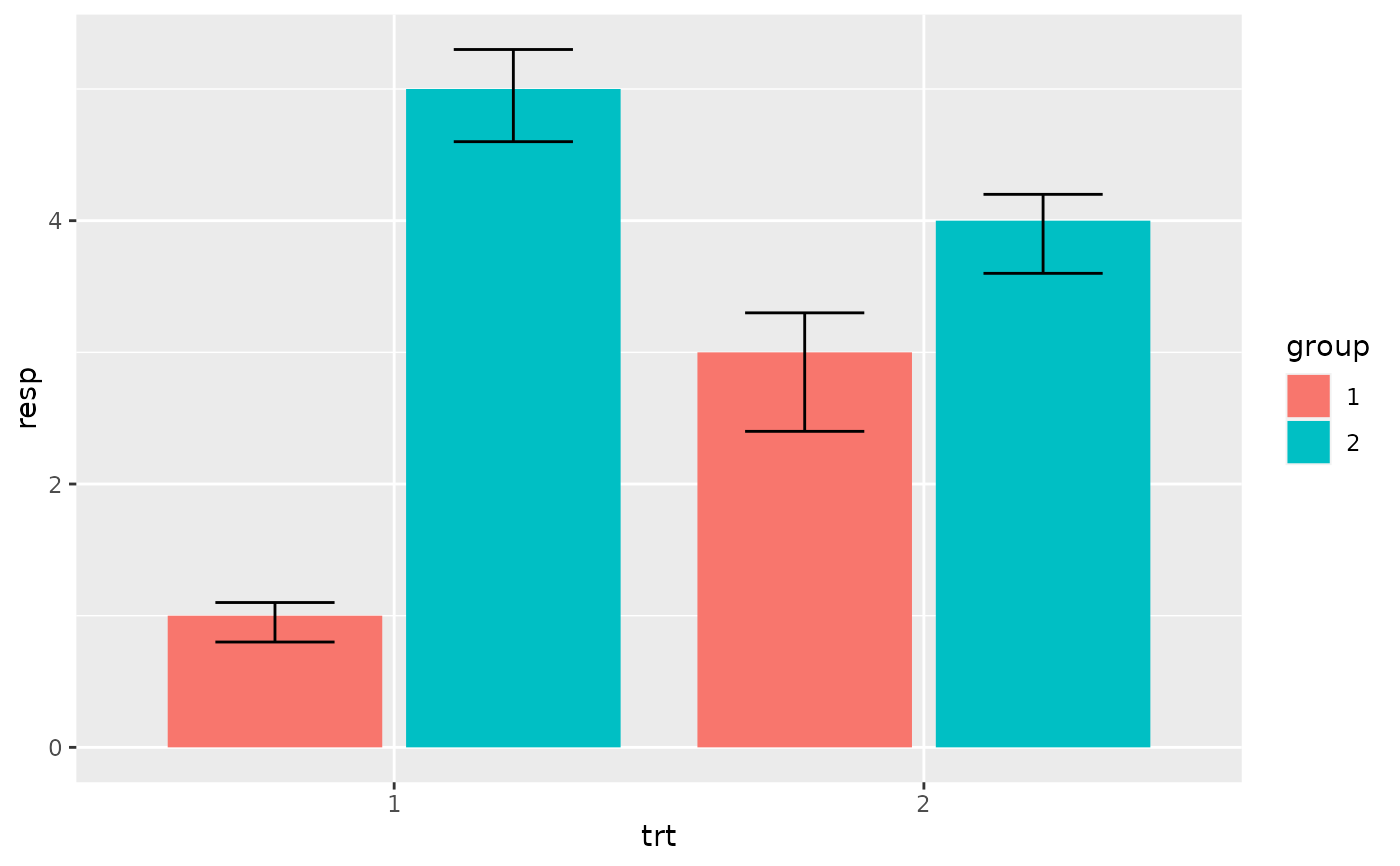Vertical intervals: lines, crossbars & errorbars
Source:R/geom-crossbar.r, R/geom-errorbar.r, R/geom-linerange.r, and 1 more
geom_linerange.RdVarious ways of representing a vertical interval defined by x,
ymin and ymax. Each case draws a single graphical object.
geom_crossbar(
mapping = NULL,
data = NULL,
stat = "identity",
position = "identity",
...,
fatten = 2.5,
na.rm = FALSE,
orientation = NA,
show.legend = NA,
inherit.aes = TRUE
)
geom_errorbar(
mapping = NULL,
data = NULL,
stat = "identity",
position = "identity",
...,
na.rm = FALSE,
orientation = NA,
show.legend = NA,
inherit.aes = TRUE
)
geom_linerange(
mapping = NULL,
data = NULL,
stat = "identity",
position = "identity",
...,
na.rm = FALSE,
orientation = NA,
show.legend = NA,
inherit.aes = TRUE
)
geom_pointrange(
mapping = NULL,
data = NULL,
stat = "identity",
position = "identity",
...,
fatten = 4,
na.rm = FALSE,
orientation = NA,
show.legend = NA,
inherit.aes = TRUE
)Arguments
- mapping
Set of aesthetic mappings created by
aes()oraes_(). If specified andinherit.aes = TRUE(the default), it is combined with the default mapping at the top level of the plot. You must supplymappingif there is no plot mapping.- data
The data to be displayed in this layer. There are three options:
If
NULL, the default, the data is inherited from the plot data as specified in the call toggplot().A
data.frame, or other object, will override the plot data. All objects will be fortified to produce a data frame. Seefortify()for which variables will be created.A
functionwill be called with a single argument, the plot data. The return value must be adata.frame, and will be used as the layer data. Afunctioncan be created from aformula(e.g.~ head(.x, 10)).- stat
The statistical transformation to use on the data for this layer, as a string.
- position
Position adjustment, either as a string, or the result of a call to a position adjustment function.
- ...
Other arguments passed on to
layer(). These are often aesthetics, used to set an aesthetic to a fixed value, likecolour = "red"orsize = 3. They may also be parameters to the paired geom/stat.- fatten
A multiplicative factor used to increase the size of the middle bar in
geom_crossbar()and the middle point ingeom_pointrange().- na.rm
If
FALSE, the default, missing values are removed with a warning. IfTRUE, missing values are silently removed.- orientation
The orientation of the layer. The default (
NA) automatically determines the orientation from the aesthetic mapping. In the rare event that this fails it can be given explicitly by settingorientationto either"x"or"y". See the Orientation section for more detail.- show.legend
logical. Should this layer be included in the legends?
NA, the default, includes if any aesthetics are mapped.FALSEnever includes, andTRUEalways includes. It can also be a named logical vector to finely select the aesthetics to display.- inherit.aes
If
FALSE, overrides the default aesthetics, rather than combining with them. This is most useful for helper functions that define both data and aesthetics and shouldn't inherit behaviour from the default plot specification, e.g.borders().
Orientation
This geom treats each axis differently and, thus, can thus have two orientations. Often the orientation is easy to deduce from a combination of the given mappings and the types of positional scales in use. Thus, ggplot2 will by default try to guess which orientation the layer should have. Under rare circumstances, the orientation is ambiguous and guessing may fail. In that case the orientation can be specified directly using the orientation parameter, which can be either "x" or "y". The value gives the axis that the geom should run along, "x" being the default orientation you would expect for the geom.
Aesthetics
geom_linerange() understands the following aesthetics (required aesthetics are in bold):
xoryyminorxminymaxorxmaxalphacolourgrouplinetypesize
Learn more about setting these aesthetics in vignette("ggplot2-specs").
See also
stat_summary() for examples of these guys in use,
geom_smooth() for continuous analogue,
geom_errorbarh() for a horizontal error bar.
Examples
# Create a simple example dataset
df <- data.frame(
trt = factor(c(1, 1, 2, 2)),
resp = c(1, 5, 3, 4),
group = factor(c(1, 2, 1, 2)),
upper = c(1.1, 5.3, 3.3, 4.2),
lower = c(0.8, 4.6, 2.4, 3.6)
)
p <- ggplot(df, aes(trt, resp, colour = group))
p + geom_linerange(aes(ymin = lower, ymax = upper))
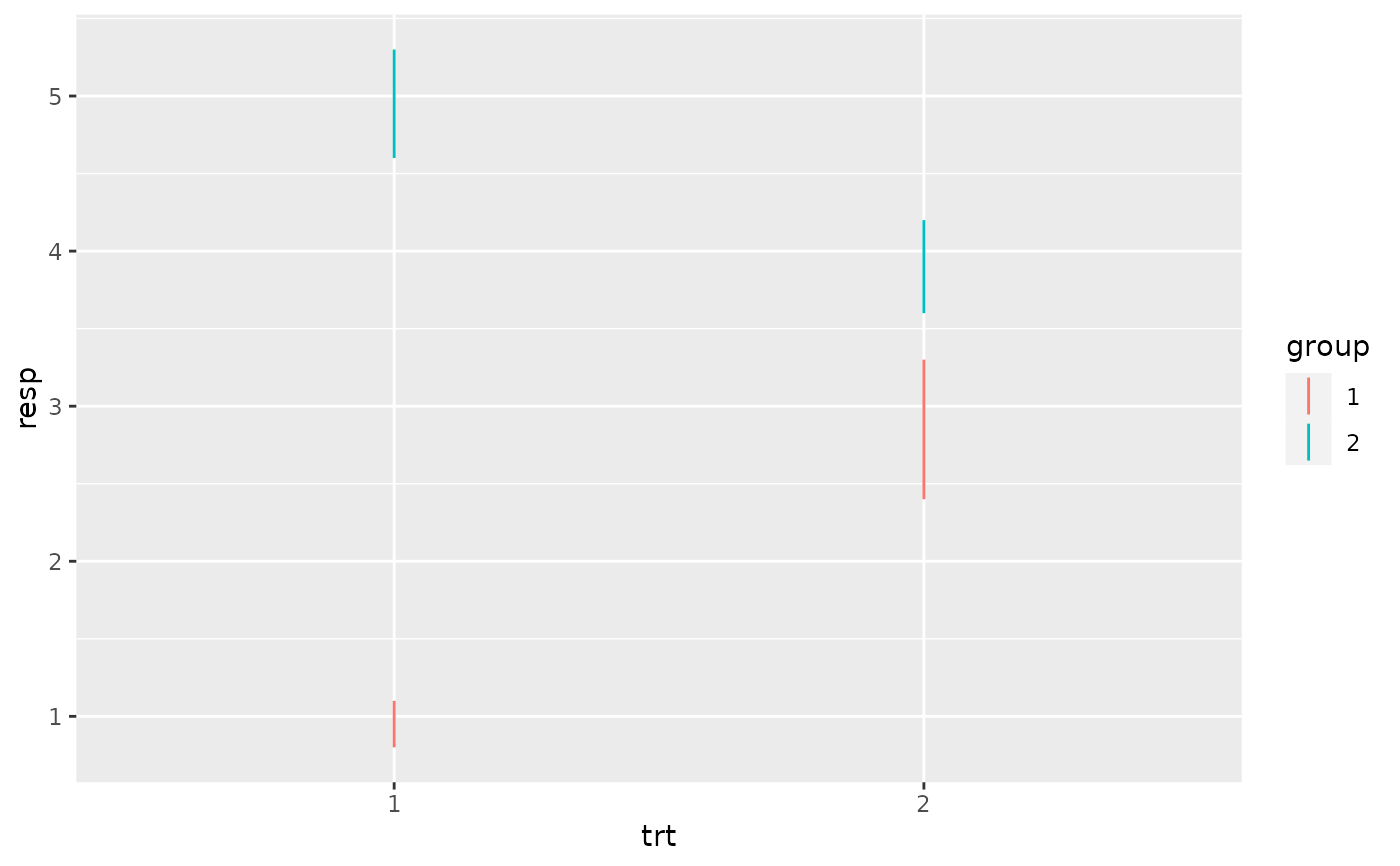 p + geom_pointrange(aes(ymin = lower, ymax = upper))
p + geom_pointrange(aes(ymin = lower, ymax = upper))
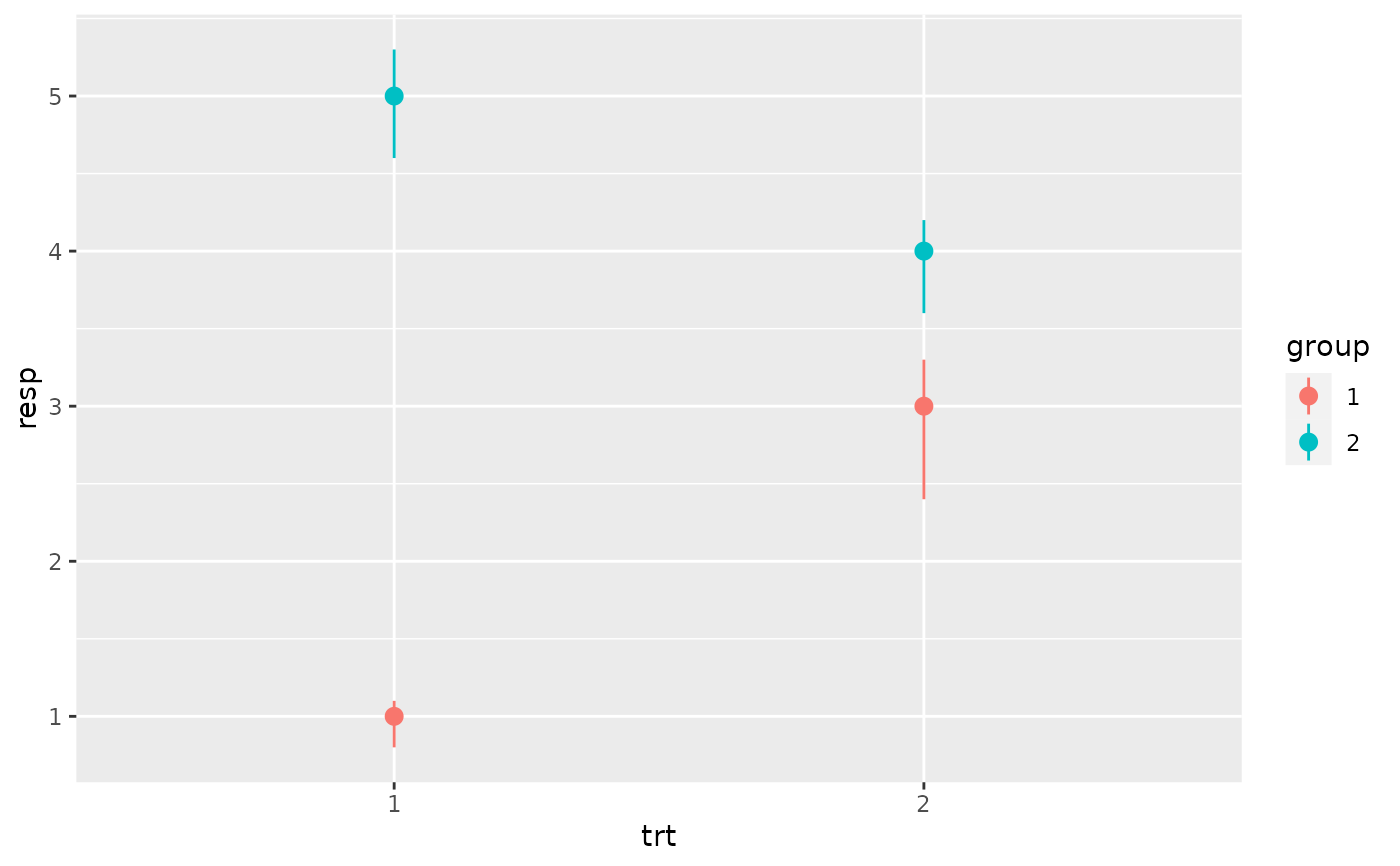 p + geom_crossbar(aes(ymin = lower, ymax = upper), width = 0.2)
p + geom_crossbar(aes(ymin = lower, ymax = upper), width = 0.2)
 p + geom_errorbar(aes(ymin = lower, ymax = upper), width = 0.2)
p + geom_errorbar(aes(ymin = lower, ymax = upper), width = 0.2)
 # Flip the orientation by changing mapping
ggplot(df, aes(resp, trt, colour = group)) +
geom_linerange(aes(xmin = lower, xmax = upper))
# Flip the orientation by changing mapping
ggplot(df, aes(resp, trt, colour = group)) +
geom_linerange(aes(xmin = lower, xmax = upper))
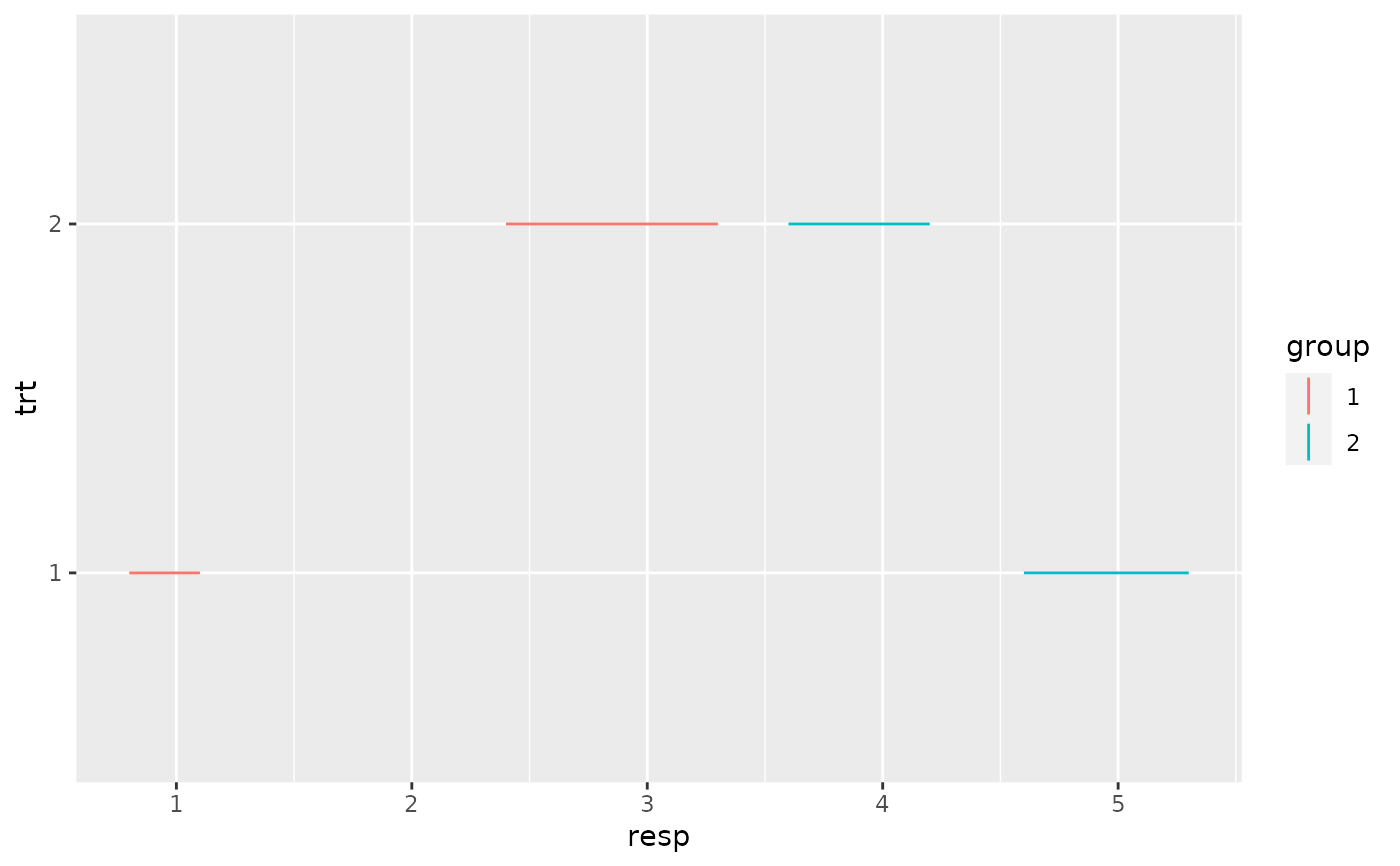 # Draw lines connecting group means
p +
geom_line(aes(group = group)) +
geom_errorbar(aes(ymin = lower, ymax = upper), width = 0.2)
# Draw lines connecting group means
p +
geom_line(aes(group = group)) +
geom_errorbar(aes(ymin = lower, ymax = upper), width = 0.2)
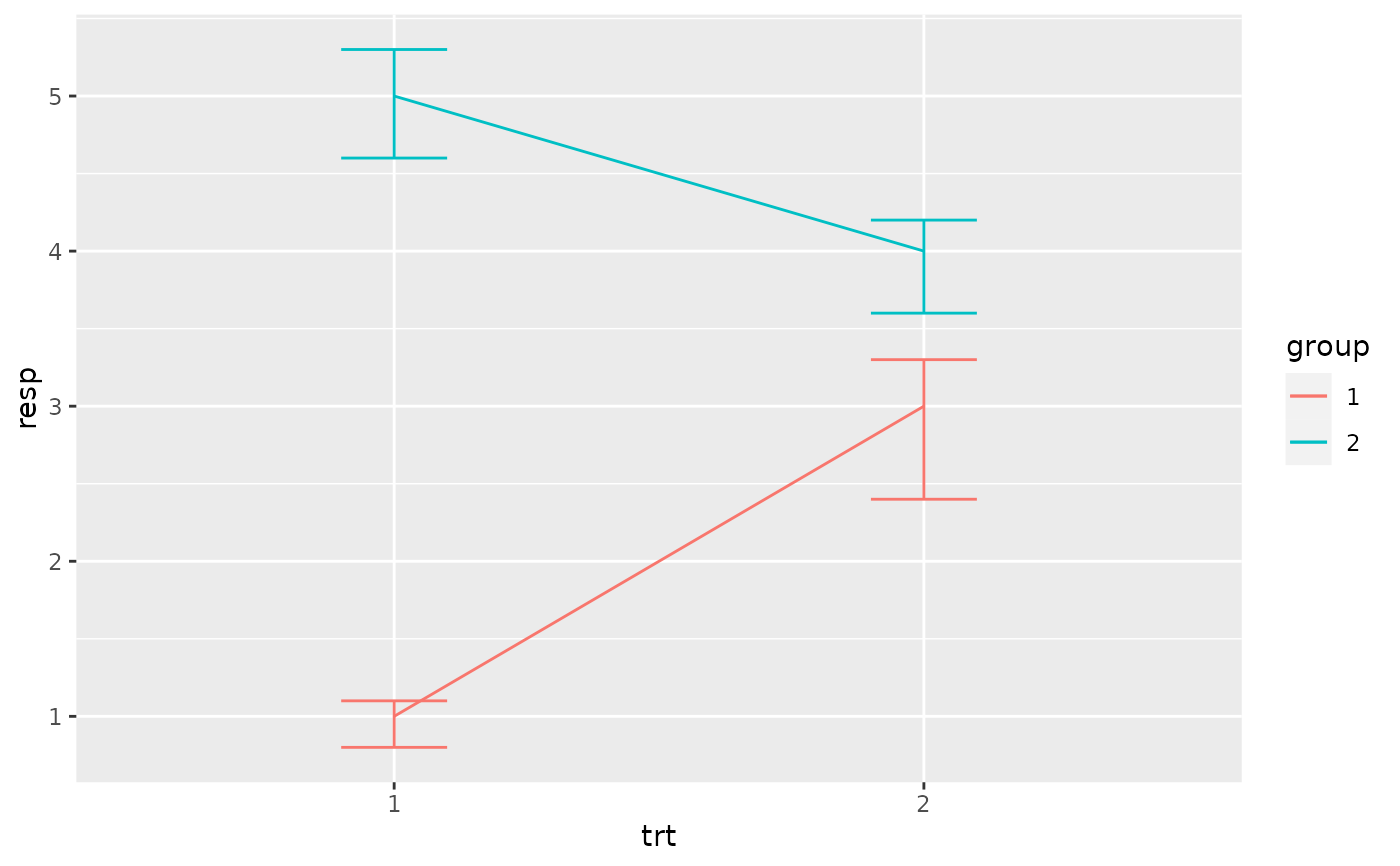 # If you want to dodge bars and errorbars, you need to manually
# specify the dodge width
p <- ggplot(df, aes(trt, resp, fill = group))
p +
geom_col(position = "dodge") +
geom_errorbar(aes(ymin = lower, ymax = upper), position = "dodge", width = 0.25)
# If you want to dodge bars and errorbars, you need to manually
# specify the dodge width
p <- ggplot(df, aes(trt, resp, fill = group))
p +
geom_col(position = "dodge") +
geom_errorbar(aes(ymin = lower, ymax = upper), position = "dodge", width = 0.25)
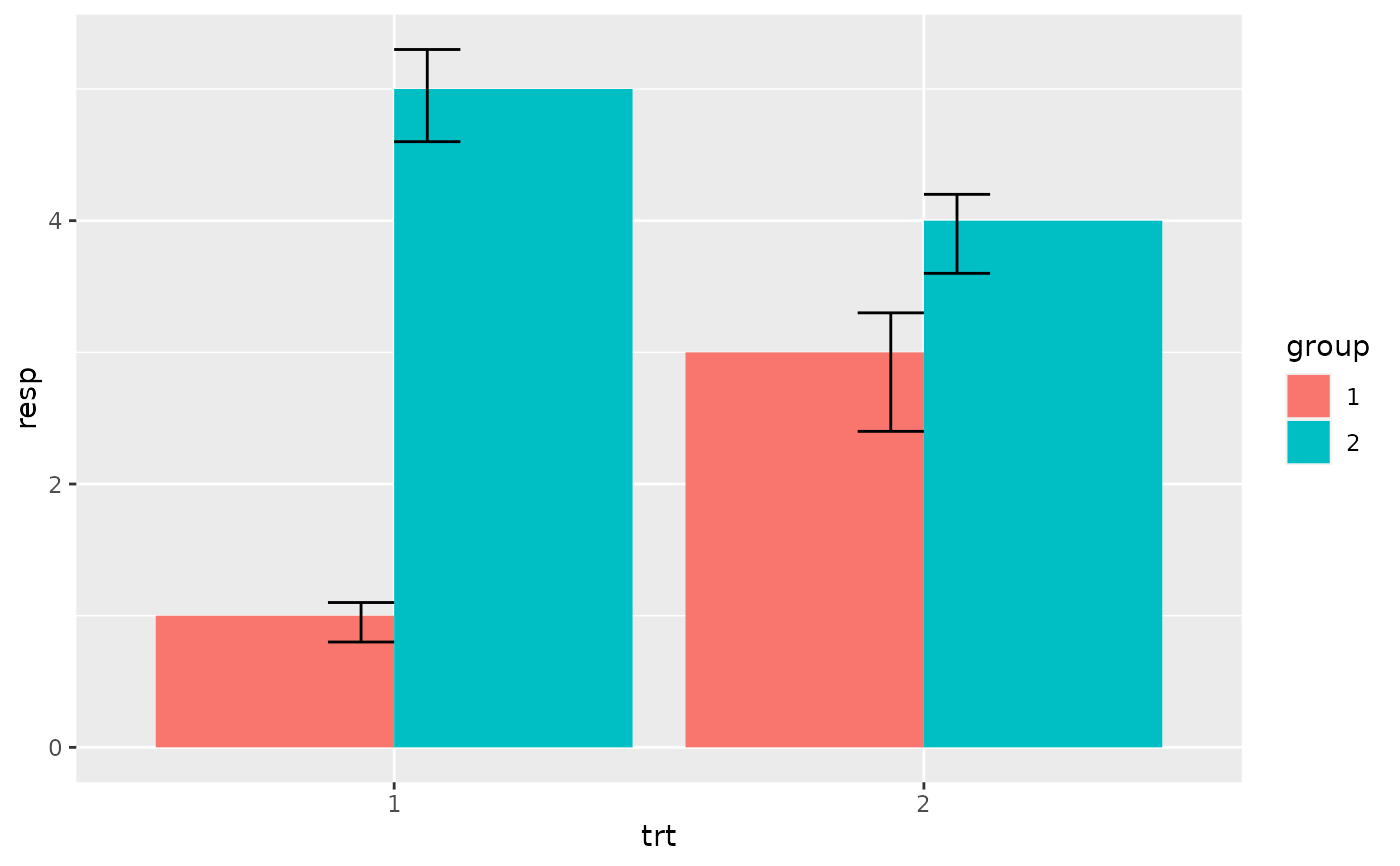 # Because the bars and errorbars have different widths
# we need to specify how wide the objects we are dodging are
dodge <- position_dodge(width=0.9)
p +
geom_col(position = dodge) +
geom_errorbar(aes(ymin = lower, ymax = upper), position = dodge, width = 0.25)
# Because the bars and errorbars have different widths
# we need to specify how wide the objects we are dodging are
dodge <- position_dodge(width=0.9)
p +
geom_col(position = dodge) +
geom_errorbar(aes(ymin = lower, ymax = upper), position = dodge, width = 0.25)
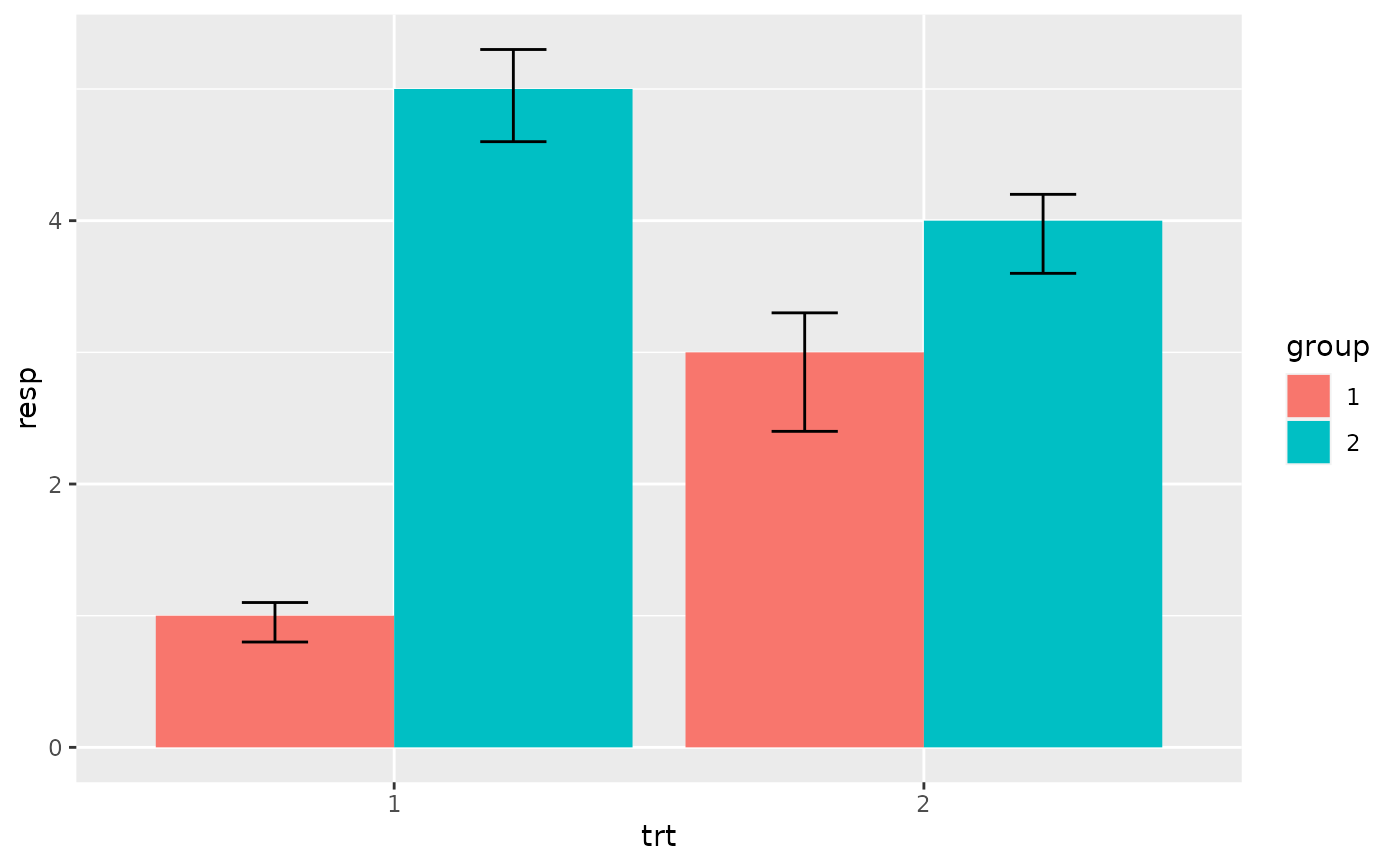 # When using geom_errorbar() with position_dodge2(), extra padding will be
# needed between the error bars to keep them aligned with the bars.
p +
geom_col(position = "dodge2") +
geom_errorbar(
aes(ymin = lower, ymax = upper),
position = position_dodge2(width = 0.5, padding = 0.5)
)
# When using geom_errorbar() with position_dodge2(), extra padding will be
# needed between the error bars to keep them aligned with the bars.
p +
geom_col(position = "dodge2") +
geom_errorbar(
aes(ymin = lower, ymax = upper),
position = position_dodge2(width = 0.5, padding = 0.5)
)
